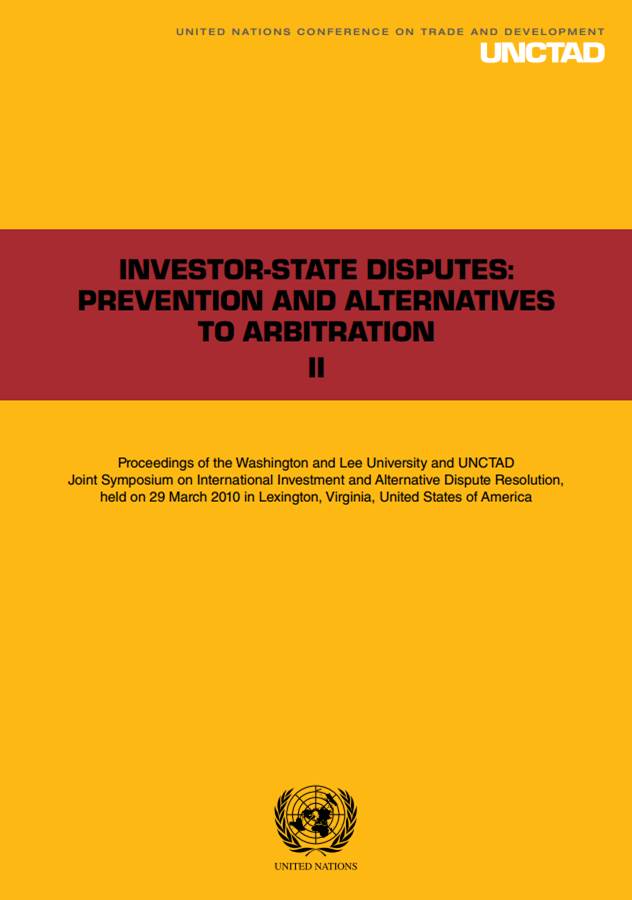Yellow Series: ISDS - Prevention and Alternatives to Arbitration, Proceedings of Symposium held on 29 March 2010
This study compiles and synthesizes the ideas addressed and explored during the Joint Symposium on International Investment and Alternative Dispute Resolution (ADR), organized jointly by UNCTAD and Washington and Lee University School of Law. The Joint Symposium brought together a unique group of experts-before, during and after a conference in Lexington, Virginia, held on 29 March 2010-to focus on the use of ADR in the context of international investment law. This study benefited from the written contributions of these experts.
Analysis arising from the various phases of the Joint Symposium identified three main areas for consideration that are explored in this publication. First, it is vital to consider the current investor-State dispute settlement (ISDS) system holistically in order to have an accurate assessment of the system´s application and implications in light of the net costs and benefits of the international investment agreement (IIA) network. Second, there is value for stakeholders to jointly explore their existing processes of addressing treaty conflict in an effort to learn and identify methods to improve the processes and design enhanced dispute resolution systems. Third, alternative means for ISDS such as the pro-active prevention and de-escalation of conflict are worth further exploring. While different investment stakeholders-such as States, investors and practitioners-may experience divergence in perspective, they nevertheless share common interests and objectives and usually consider the benefits of an investment to both the investor and to the economic development for host States as important.
Considering the strengths and weaknesses of existing ISDS processes, various alternatives to arbitration worthy of on-going consideration as well as new alternatives to traditional ISDS are identified. There are opportunities to avoid dispute crystallization, prevent conflict escalation and minimize the scope of the dispute at various junctures, including the preliminary design phase, the pre-conflict phase, the pre-dispute phase, the formalized dispute phase, during adjudicative proceedings and in the post-award phase.
The Joint Symposium demonstrated that ADR, as a potential means of addressing IIA-related conflict, is an area of clear interest to stakeholders and experts. The commentary in this volume nevertheless reflects that ADR may not be appropriate for every conflict, but that ADR´s untapped value deserves systematic consideration.
The materials in this volume are intended to help stakeholders assess the IIA system, understand the scope of their obligations, appreciate the possibility of risk and permit informed choices that give investors an opportunity and States a chance to promote their development objectives in an environment that provides sufficient policy space. The objective should be to create the most efficacious dispute prevention and resolution system possible; arbitration can be used in appropriate circumstances, while alternative modalities can also be used to maximize shared interests and create efficient dispute settlement. It is vital to move beyond simple rejection or scepticism of alternative modalities, but instead engage in honest and thoughtful consideration in light of inputs offered by a broad cross-section of experts. The findings, discussions, views and proposals published in this paper are intended to facilitate concrete developments, new thinking and novel approaches.
















